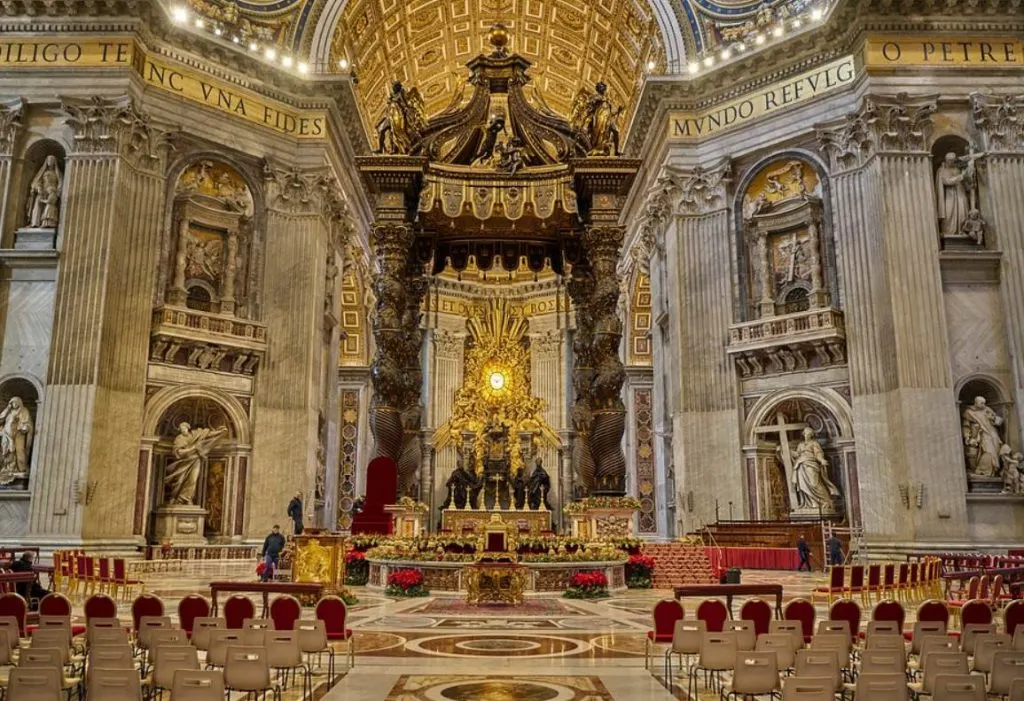One of the greatest Baroque artists in history spent nearly his entire life in Rome. Gian Lorenzo Bernini (1598-1680) was a child prodigy who dreamed of creating monumental works of art for the most famous church in the city.
That’s exactly what he did, and one of these works was a marvelous decoration for a special relic that presumably belonged to one of the most important figures in Christianity.
Let’s take a closer look at some of the most interesting facts about the Chair of Saint Peter, one of Bernini’s ultimate masterpieces.
1. It’s located in the largest church in the world
The Chair of Saint Peter is one of the most important and fascinating relics in Christianity. Its also referred to as the “Throne of Saint Peter” and it’s assumed that it once belonged to Apostle Saint Peter.
He was one of the followers of Jesus Christ who helped to spread the word about Christianity in the early phase of the religion. He was executed along with countless other early Christians after the Great Fire of Rome in 64 A.D.
This was during the reign of Emperor Nero who blamed the Christians for this dramatic event. Saint Peter was crucified on Vatican Hill and buried on the location of St. Peter’s Basilica, the church that holds the chair that he presumably once sat on.

2. Bernini’s work encapsulates the famous chair
Saint Peter was the first Bishop of Rome, a title that can also be identified as the first Pope of Rome. This makes the chair in which he once presumably sat even more special.
The relic itself is a throne made of wood that is understandably in a deteriorated state. Bernini was commissioned to create a sculpture that would emphasize the importance of this oaken relic.
The gilt bronze sculpture produced by Gian Lorenzo Bernini which encapsulates the wooden chair embodies the Baroque era. That’s unsurprising because Bernini was already the most renowned artist of his time and is credited as being the founding father of Baroque sculpture.
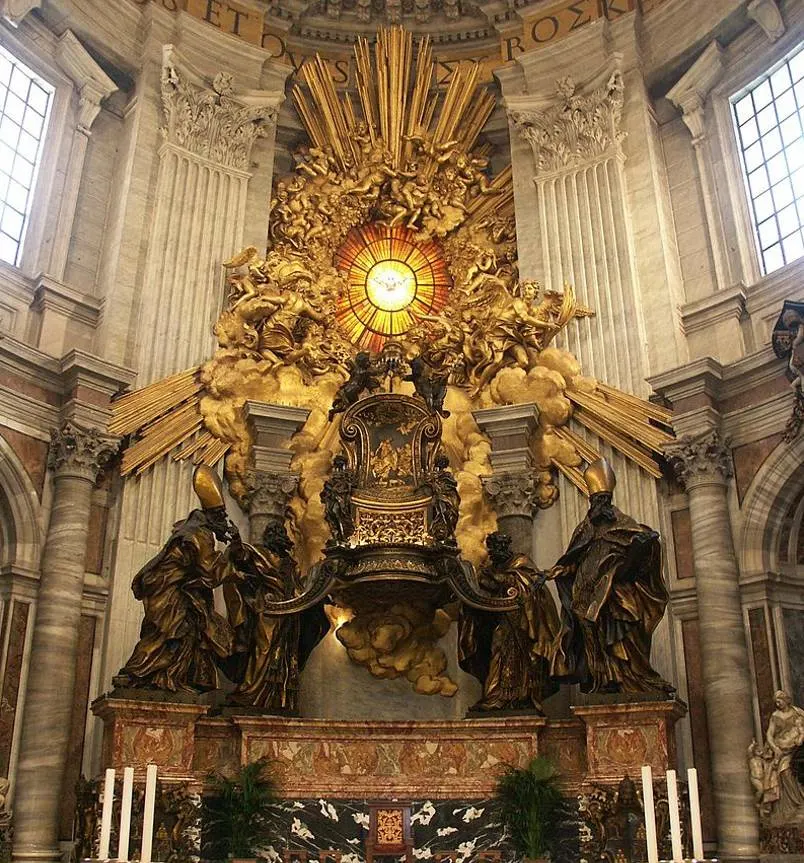
3. It was sculpted shortly after the artist’s experienced a massive setback

Despite being the most renowned sculptor and architect of his time, Bernini produced this work during a rough time in his career. He completed the gilt bronze sculpture between 1647 and 1653.
When Pope Urban died in 1644 he was replaced by his fierce enemy Pope Innocent X Pamphilj. This dramatically reduced the number of commissions that the artist earned at the time.
This was after a dramatic event that happened in the early 1640s. Bernini was the main architect of the bell towers of St. Peter’s Basilica, the first of which was completed in 1641. Shortly after, cracks began to appear and work wasn’t halted as the second one was built.
Bernini was blamed for this dramatic fault and both bell towers were completely demolished, humiliating the famous artist. A thorough investigation in 1680 led to the conclusion that it wasn’t Bernini’s fault as the towers had been constructed on weak foundations, similar to the Leaning Tower of Pisa.
Bernini already completed another incredible artwork inside St. Peter’s Basilica earlier called “St. Peter’s Baldachin” (1623-1634).
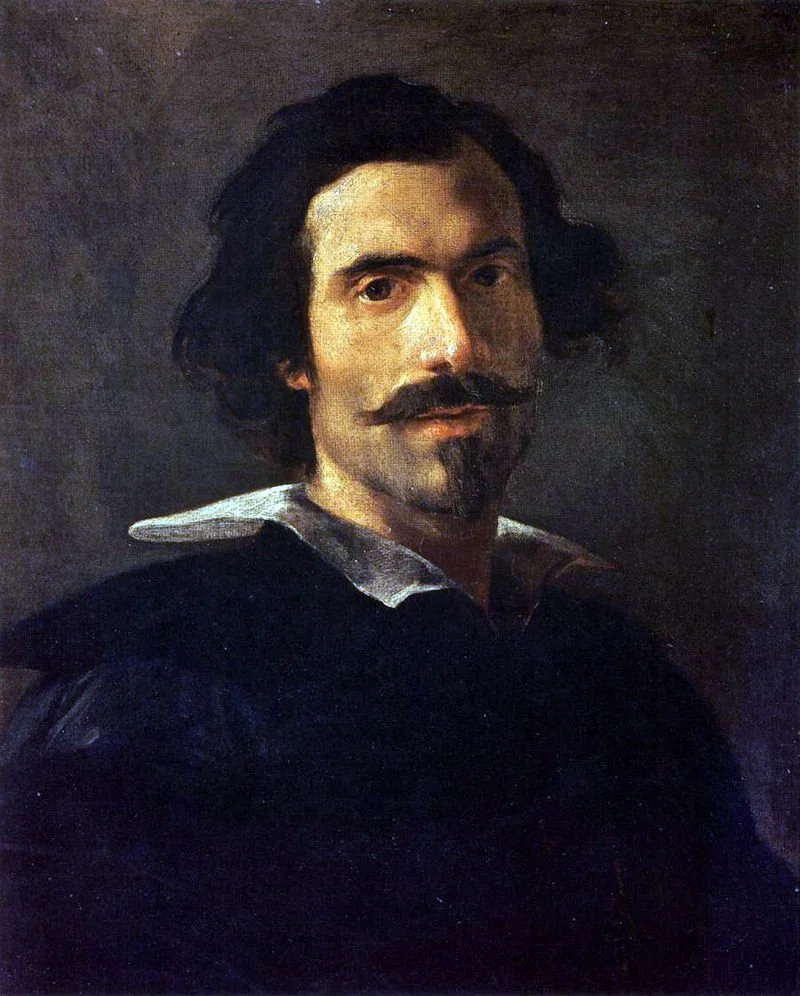
4. It’s uncertain whether or not the wooden chair is authentic
Little is known about the early history of the Chair of Saint Peter. We know that it was given as a present to Pope John VIII (died in 882) in 875 by Charles the Bald (823-877), the Holy Roman Emperor at the time.
The chair was installed inside Bernini’s sculpture in 1666 and It was long believed that it was a double chair. This theory has been refuted when the chair was studied in modern times.
A study conducted between 1968 and 1974 concluded that the worm-infested chair was indeed ancient but the oldest parts didn’t predate the 6th century A.D. This was the final time that the chair was removed from its current location as well.
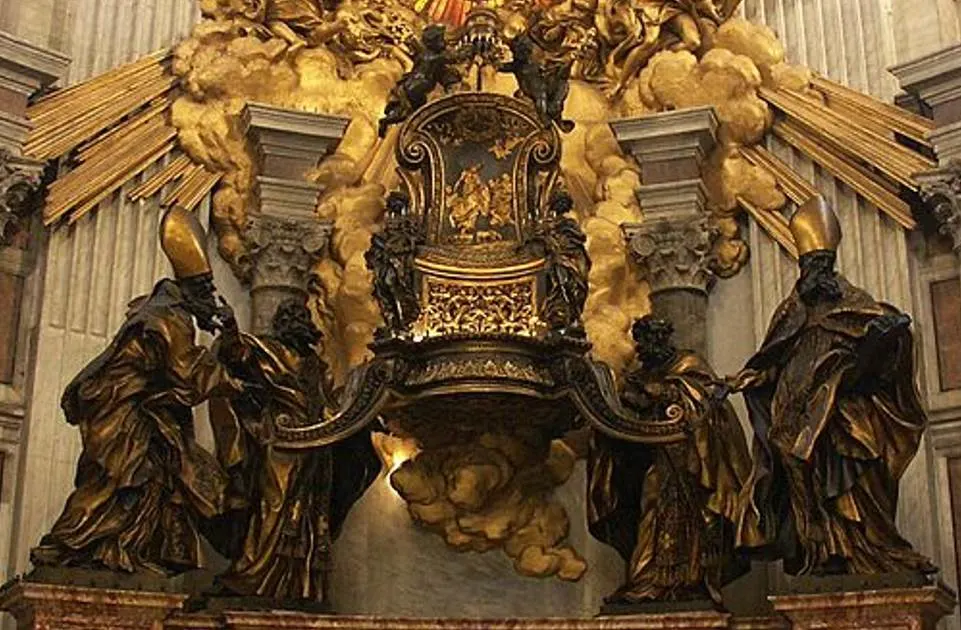
5. The chair is supported by sculptures of 4 important Christian figures
Because this is one of the most important relics in Christianity, Bernini sculpted four states of some of the most important figures in the religion to support it. These are called “Doctors of the Church,” saints that have made a significant contribution.
Two saints from the west on the outside and two saints from the east were included on the inside. These have been identified as:
- Saint Ambrose and Saint Augustine of Hippo from the West.
- Saint John Chrysostom and Saint Athanasius from the East.
6. Bernini integrated a special light effect to highlight the chair
Bernini wasn’t just a sculptor but also a renowned architect who knew how to manipulate light sources to create an amazing effect.
He was doing the same thing in the Cornaro Chapel of the church of Santa Maria della Vittoria in Rome where he installed one of his most celebrated works called “The Ecstasy of Saint Teresa” (1647-1652).
The gilt rays and polychrome architecture are perfectly highlighted by the light sources in this part of St. Peter’s Basilica. This blend of sculpture and architectural details is what made Bernini one of the most important artists of the 17th century.
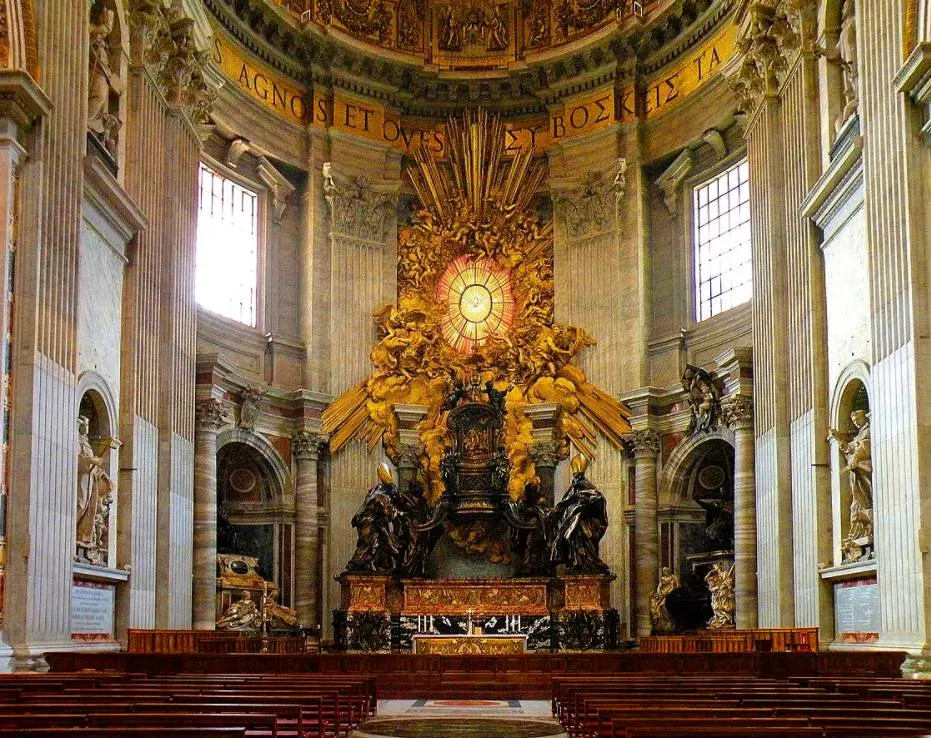
7. The chair has its own feast every year in February
The Chair of Saint Peter that is present in St. Peter’s Basilica isn’t the only chair that has been identified as belonging to Saint Peter in history. There were at least 2 others, one that was kept in the baptismal chapel of Old St. Peter’s Basilica, and one that was located inside the Catacomb of Priscilla.
Both these chairs already had their feast before the Pope received the current version of the chair in the 9th century. One was held on January 18 and one on February 22.
None of these chairs have survived but the abstract idea of a feast for them stayed. Both feasts were held until 1960 until Pope John XXIII canceled the one held on January 18.
Since 1969, the feast of the Chair of Saint Peter has been celebrated on February 22 every year.
8. Where exactly is the Chair of Saint Peter situated?
St. Peter’s Basilica is the biggest church in the world with a length of 220 meters (720 feet), a maximum width of 150 meters (490 feet), and a height of 136.6 meters (448 feet).
The nave is not only extremely long but also has a height of 46.2 meters (152 feet), something that makes your jaw drop the moment you enter this monumental structure.
The Cathedra Petri (as the chair is referred to) is located right at the back of the church, behind the main altar. As you approach Bernini’s masterpiece, you’ll notice that the chair appears to be floating above the altar, another stroke of genius of the Baroque master.
